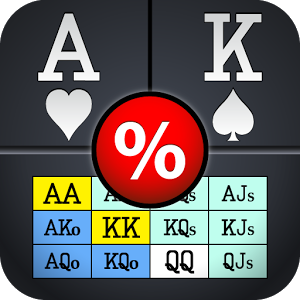The betting machine
Editor’s note: What follows is an edited excerpt from Jeff Hwang’s book, Advanced Pot-Limit Omaha: Small Ball and Short-Handed Play.
Newton’s First Law of Motion: An object in motion tends to stay in motion, and an object at rest tends to stay at rest unless acted upon by an external unbalanced force.
Or, as it pertains to pot-limit Omaha, once you set the betting machine in motion, you should tend to keep betting until somebody plays back at you.
Here’s a hypothetical situation: It’s a $5-$5 blinds game with $1,000 stacks and typical opponents, and you are on the button. Two players limp in front of you. You limp, and both blinds check. There is $25 in the pot.
Flop ($25): J 7
7















Turn ($75): K




River ($225): 7



Which of the following hands might you have played this way?
A. J




















B. A































C. J




























D. 10




























E. All of the above except maybe C, with which you might check the river and show down.
The best answer is E.
When everybody checks to the average player on the button, he will far too often make the error of taking one stab at the pot and then shutting down, even with a strong draw. Much of the time, the thought behind stopping is that the other player called the flop and may call again on the turn, or that the other player may be trapping and planning on check-raising.
What’s missing, however, is that when everybody checks to you on the button, it is usually because they don’t have anything. This is especially true in a pot that was unraised preflop, because in that case, there is little reason for your opponents to expect you to bet. And oftentimes, even if a player checks and then calls your bet on the flop, he may not be strong enough to call another bet on the turn. And even if he does call on the turn, he may not be able to call another bet on the river. This is particularly true if your opponent is on a draw himself, which will be the case far more often than not.
So, we get to …
Hwang’s Corollary: Once you decide to start betting at a pot, you should play the hand as if you have the nuts until your opponents does something about it.
More specifically, you should bet as if you’ve flopped top set until your opponent bets into you or you get raised; if that happens, then you can re-evaluate your options. And you do this whether you flop top set, a wrap, the nut-flush draw with a gutshot, or something weaker, like top pair or an open-end straight draw (or even just plain air).
Now, this doesn’t mean that you should always bet weak draws or weak hands when everybody checks to you on the button; it simply means that when you do choose to make a play at the pot, you need to follow through. The obvious exception to the rule is when a flush or straight is possible on the flop, or when the board is paired; you also might slow down if you have an extremely weak hand or weak draw and you pick up multiple callers on the flop.
Submit your review | |









